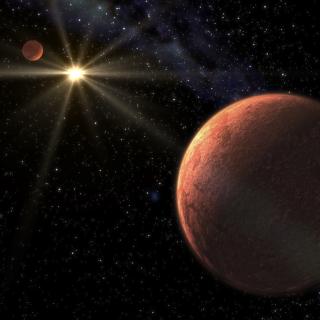Bibcode
Hori, Yasunori; Fukui, Akihiko; Hirano, Teruyuki; Narita, Norio; de Leon, Jerome P.; Ishikawa, Hiroyuki Tako; Hartman, Joel D.; Morello, Giuseppe; Abreu García, Nestor; Álvarez Hernández, Leticia; Béjar, Víctor J. S.; Calatayud-Borras, Yéssica; Carleo, Ilaria; Enoc, Gareb; Esparza-Borges, Emma; Fukuda, Izuru; Galán, Daniel; Geraldía-González, Samuel; Hayashi, Yuya; Ikoma, Masahiro; Ikuta, Kai; Isogai, Keisuke; Kagetani, Taiki; Kawai, Yugo; Kawauchi, Kiyoe; Kimura, Tadahiro; Kodama, Takanori; Korth, Judith; Kusakabe, Nobuhiko; Laza-Ramos, Andrés; Livingston, John H.; Luque, Rafael; Miyakawa, Kohei; Mori, Mayuko; Murgas, Felipe; Orell-Miquel, Jaume; Palle, Enric; Parviainen, Hannu; Peláez-Torres, Alberto; Puig-Subirà, Marta; Sánchez-Benavente, Manuel; Sosa-Guillén, Paula; Stangret, Monika; Terada, Yuka; Muñoz Torres, Sara; Watanabe, Noriharu; Bakos, Gaspar Á.; Barkaoui, Khalid; Beichman, Charles; Benkhaldoun, Zouhair; Boyle, Andrew W.; Ciardi, David R.; Clark, Catherine A.; Collins, Karen A.; Collins, Kevin I.; Conti, Dennis M.; Crossfield, Ian J. M.; Everett, Mark E.; Furlan, Elise; Ghachoui, Mourad; Gillon, Michaël; Gonzales, Erica J.; Higuera, Jesus; Horne, Keith; Howell, Steve B.; Jehin, Emmanuël; Lester, Kathryn V.; Lund, Michael B.; Matson, Rachel; Matthews, Elisabeth C.; Pozuelos, Francisco J.; Safonov, Boris S.; Schlieder, Joshua E.; Schwarz, Richard P.; Sefako, Ramotholo; Srdoc, Gregor; Strakhov, Ivan A.; Timmermans, Mathilde; Waalkes, William C.; Ziegler, Carl; Charbonneau, David; Essack, Zahra; Guerrero, Natalia M.; Harakawa, Hiroki; Hedges, Christina; Ishizuka, Masato; Jenkins, Jon M.; Konishi, Mihoko; Kotani, Takayuki; Kudo, Tomoyuki; Kurokawa, Takashi; Kuzuhara, Masayuki; Nishikawa, Jun; Omiya, Masashi; Ricker, George R.; Seager, Sara; Serizawa, Takuma; Striegel, Stephanie; Tamura, Motohide; Ueda, Akitoshi et al.
Referencia bibliográfica
The Astronomical Journal
Fecha de publicación:
6
2024
Número de citas
0
Número de citas referidas
0
Descripción
Sub-Neptunes with radii of 2–3 R ⊕ are intermediate in size between rocky planets and Neptune-sized planets. The orbital properties and bulk compositions of transiting sub-Neptunes provide clues to the formation and evolution of close-in small planets. In this paper, we present the discovery and follow-up of four sub-Neptunes orbiting M dwarfs (TOI-782, TOI-1448, TOI-2120, and TOI-2406), three of which were newly validated by ground-based follow-up observations and statistical analyses. TOI-782 b, TOI-1448 b, TOI-2120 b, and TOI-2406 b have radii of , , 2.120 ± 0.067 R ⊕, and and orbital periods of P = 8.02, 8.11, 5.80, and 3.08 days, respectively. Doppler monitoring with the Subaru/InfraRed Doppler instrument led to 2σ upper limits on the masses of <19.1 M ⊕, <19.5 M ⊕, <6.8 M ⊕, and <15.6 M ⊕ for TOI-782 b, TOI-1448 b, TOI-2120 b, and TOI-2406 b, respectively. The mass–radius relationship of these four sub-Neptunes testifies to the existence of volatile material in their interiors. These four sub-Neptunes, which are located above the so-called "radius valley," are likely to retain a significant atmosphere and/or an icy mantle on the core, such as a water world. We find that at least three of the four sub-Neptunes (TOI-782 b, TOI-2120 b, and TOI-2406 b), orbiting M dwarfs older than 1 Gyr, are likely to have eccentricities of e ∼ 0.2–0.3. The fact that tidal circularization of their orbits is not achieved over 1 Gyr suggests inefficient tidal dissipation in their interiors.
Proyectos relacionados

Estrellas de Baja Masa, Enanas Marrones y Planetas
Se investigan los procesos que conducen a la formación de estrellas de baja masa, enanas marrones y exoplanetas y caracterizar las propiedades físicas de estos astros en varias etapas evolutivas. Las estrellas de muy baja masa y las enanas marrones son probablemente los objetos más numerosos de nuestra Galaxia, pero no por ello están
Rafael
Rebolo López

Exoplanetas y Astrobiología
La búsqueda de vida en el Universo se ha visto impulsada por los recientes descubrimientos de planetas alrededor de otras estrellas (los llamados exoplanetas), convirtiéndose en uno de los campos más activos dentro de la Astrofísica moderna. En los últimos años los descubrimientos cada vez más numerosos de nuevos exoplanetas y los últimos avances
Enric
Pallé Bago